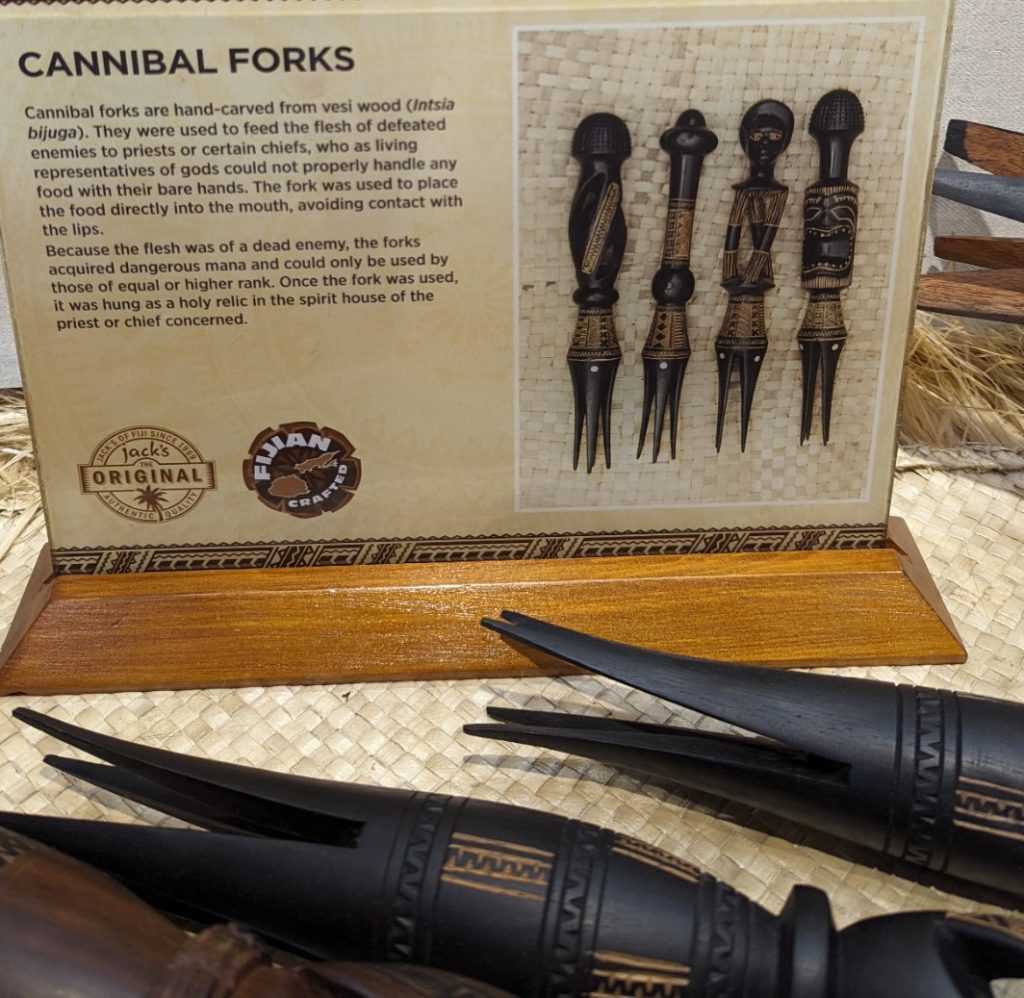Cannibal forks, also known as Fijian cannibal forks, are fascinating cultural artifacts with a somewhat gruesome history. They were once used in certain regions of the South Pacific, particularly in Fiji, during rituals related to cannibalism. The practice of cannibalism in Fiji was primarily associated with religious and ceremonial traditions, and these specialized utensils played a role in those events.
Here’s a bit more about them:
- Design: Cannibal forks typically have long handles with multiple prongs (usually four). They were crafted from wood and often had ornate carvings, reflecting the craftsmanship of the Fijian people. Their design was intended to keep human flesh from being touched by the hands, as doing so was considered taboo.
- Use: These forks were mainly used by high-ranking chiefs or priests during rituals. The consumption of enemies was sometimes a way to display dominance, absorb spiritual power, or appease the gods. However, not everyone participated in cannibalism—it was often limited to particular groups or individuals with ceremonial roles.
- Historical Context: Cannibalism in Fiji was part of their tribal warfare and spiritual practices up until the 19th century. With the arrival of missionaries and the influence of colonization, these practices largely disappeared, and the forks became more of a historical curiosity or collectible.
- Modern Significance: Today, cannibal forks are seen as cultural artifacts and can be found in museums or as souvenirs in Fiji, symbolizing a part of the island’s complex and sometimes violent history
Strangely enough I can’t find them available for sale on Amazon 🙂

